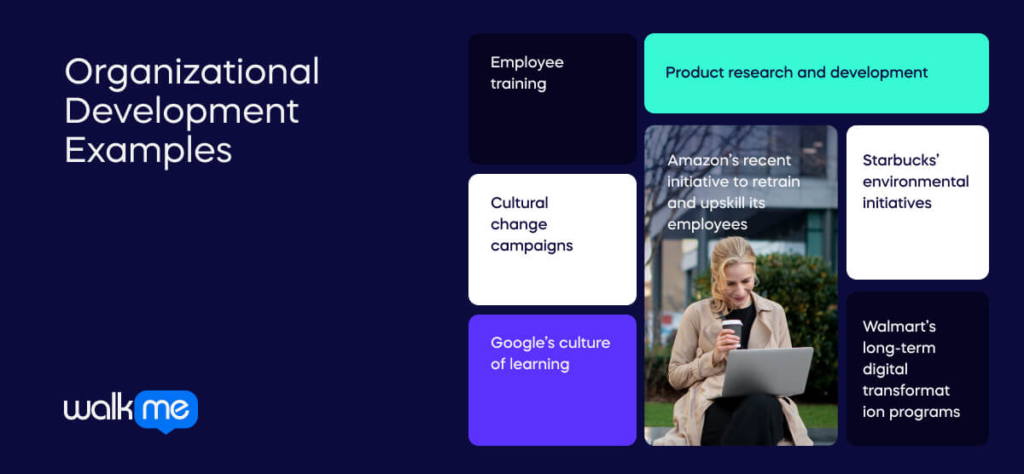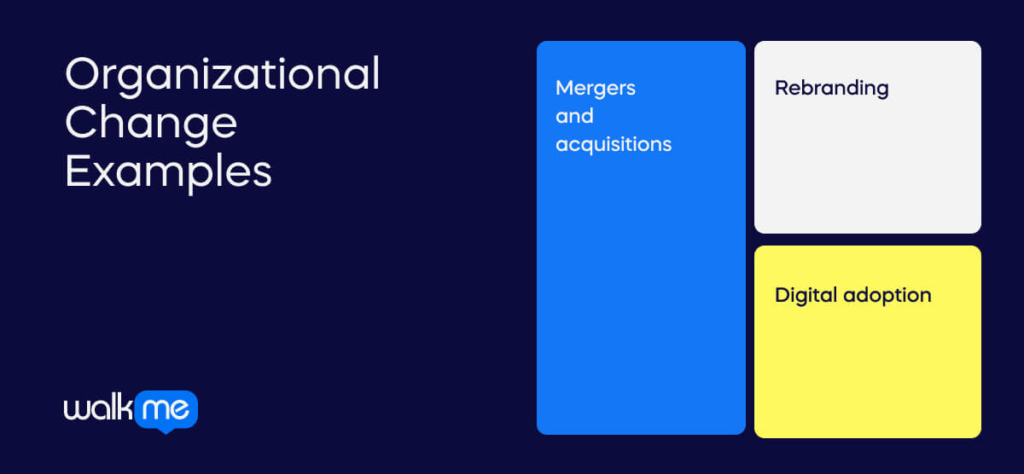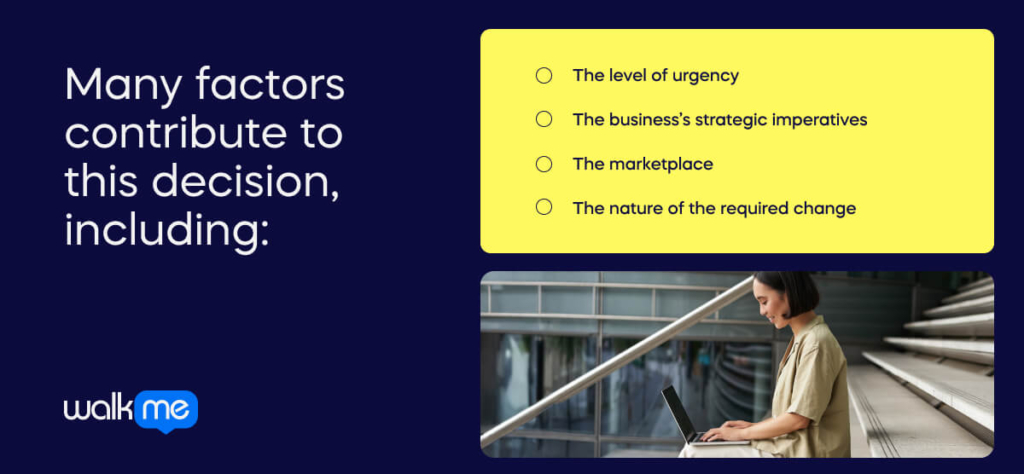Organizational development examples are a great way to understand the abstract field of organizational development.
The key principle of OD is that business organizations are complex social creations that impact society in unpredictable ways. In the factories and workhouses of the Industrial Revolution, managers did not take much thought to this complexity.
But in the twentieth century, things changed dramatically. Now, in the 2020s, organizations are more complicated than ever. Hierarchical relationships still matter. But employees expect a great deal from their employees – and ruling with authority is unpopular.
When deploying any kind of change management project, small or large, organizational development examples help to make things happen.
In this article, we will show you how while explaining the difference between organizational development and organizational change. We’ll briefly define organizational development, then offer key examples from the corporate world. Then, we’ll highlight the difference between organizational change and development.
In 2023, we are at a moment in which many employees are frustrated at the pace of change in their organizations. Using the right interventions is crucial to change success. Pay attention to these organizational development examples, and you are far more likely to be on the right path.
What are organizational development examples all about?
In this article, the organizational development examples will be drawn from the specific field of organizational development.
Organizational development (OD) is a planned approach to improving an organization’s effectiveness through specific interventions. It is a multidisciplinary field aimed at enhancing organizational performance, employee well-being, and overall effectiveness.
At its core, organizational development aligns its culture, systems, and processes with the company’s strategic objectives, employee engagement, and culture. The practice of OD includes diagnosing organizational problems and challenges, designing interventions to address them, implementing change initiatives, and evaluating their impact.
So, organizational development examples can include
- Case studies of successful change management
- How to design an appropriate intervention
- Organizational development interventions of any kind
- Explanations of relevant KPIs for OD interventions.
We will cover some of these examples in this article.
Organizational Development Examples

Organizational development projects can include ongoing, long-term programs such as:
- Employee training. Employee training is essential, especially in the digital business environment. Workers need to stay competent and productive. And, as lifelong learning becomes more of a reality, this means continual training initiatives.
- Product research and development. The development of new services, products, and ideas can change the nature of a business. However, these programs often take years to come to fruition.
- Cultural change campaigns. Culture matters – it affects an organization’s productivity, agility, performance, and many other things. Aligning culture with an organization’s mission is often a long-term, continual effort.
Now, let’s look at a few real-world organizational development examples:
- Amazon’s recent initiative to retrain and upskill its employees. The online retail giant recently committed to spending $700 million on retraining its workers. This forward-thinking project will help its own employees stay resilient in the years to come. It will also help the business develop employee training programs that keep the company relevant, modern, and cutting-edge.
- Google’s culture of learning. According to a former Google executive, a culture that emphasizes learning is important to long-term business growth. A culture of learning is essential for businesses that continually grow and transform, such as Google.
- Starbucks’ environmental initiatives. The well-known coffee company introduced a variety of environmentally-friendly initiatives that include recycling, paper cup reduction, energy consumption, and so on. Naturally, these long-term changes will positively impact the environment. But they will also improve the company’s image and its bottom line.
- Walmart’s long-term digital transformation programs. It’s no secret that Amazon and other online retailers have pressured Walmart to transform. The US retailer has responded by engaging in complex, long-term digital transformation efforts. These include a variety of digital adoption programs, the introduction of new customer services, and more.
Programs such as these may be called “organizational development” by some.
Others may refer to them as “organizational change” programs.
So which is correct?
Organizational Development and the Future of Change
There is definitely an overlap between organizational development and organizational change.
As we have seen, organizational development (OD) and organizational change are related concepts but differ in scope, focus, and approach. Short-term organizational change is just one part of long-term organizational development. So it makes sense that change projects can use corporate development examples.
We’ve explored some great examples of organizational development interventions from Amazon, Google, Starbucks, and Walmart. We’ve also shown how they are different from large-scale organizational change.
What does the future hold for the field of organizational development?
Recent developments like hybrid working, digital transformation, and economic uncertainty all mean that it’s essential to be extremely cautious with any change or intervention. An organizational culture of agile learning can help businesses of every size weather the storm.
Organizational Change Examples

While long-term organizational development projects may not be noticeable to outside observers, short-term change projects often are.
Here are some examples:
- Mergers and acquisitions. When two businesses join forces, there are often drastic, overnight changes. These can include rebranding, restructuring, job displacement, rapid cultural changes, and more.
- Rebranding. To stay modern and relevant, many businesses will engage in rebranding efforts. Typically, these changes occur quickly, through the introduction of new logos, new branding assets, a new brand image, and so on.
- Digital adoption. A company that adopts new digital technology will often make a quick transition to a new set of tools. Digital adoption is becoming more and more common in today’s digitizing economy.
Changes such as these are often driven by the same causes as organizational development projects.
Such drivers of change can include:
- Competitive pressure
- Changing industry paradigms
- Customer demand
- Growth opportunities
And so on.
Final Thoughts: “Change” vs. “Develop”
Should an organization engage in short-term disruptive change?
Or long-term development?
Many factors contribute to this decision, including:

- The level of urgency
- The business’s strategic imperatives
- The marketplace
- The nature of the required change
As we have seen, there is certainly overlap between “organizational development” and “organizational change.”
However, in today’s fast-paced economy, speed is an asset.
The faster an organization can initiate, implement, and complete changes, the better it will be able to adjust to the demands of today’s ever-changing economy.

